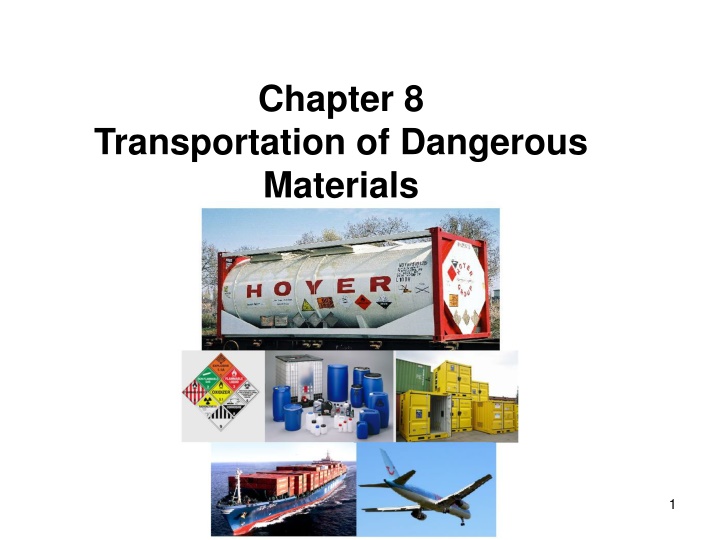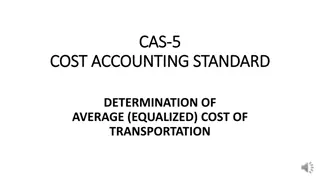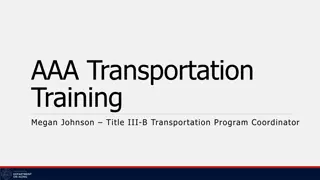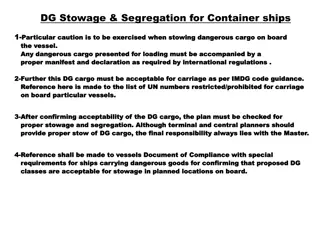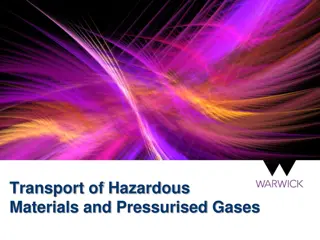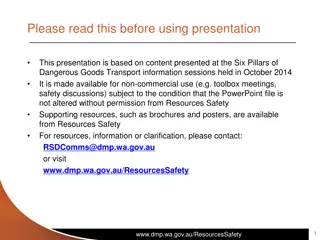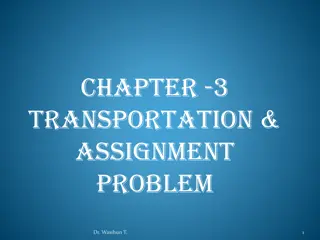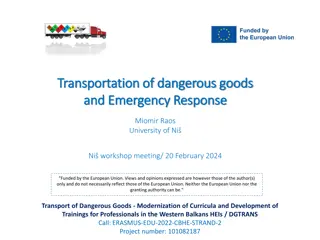Transportation of Dangerous Materials Regulations
Lab workers handling dangerous materials need to follow strict regulations to prevent accidents. The United Nations and IATA provide guidelines for shipping dangerous goods, with responsibilities for shippers, carriers, and receivers outlined. Classification of dangerous materials and proper handling are key to ensuring safety in transportation.
Download Presentation

Please find below an Image/Link to download the presentation.
The content on the website is provided AS IS for your information and personal use only. It may not be sold, licensed, or shared on other websites without obtaining consent from the author.If you encounter any issues during the download, it is possible that the publisher has removed the file from their server.
You are allowed to download the files provided on this website for personal or commercial use, subject to the condition that they are used lawfully. All files are the property of their respective owners.
The content on the website is provided AS IS for your information and personal use only. It may not be sold, licensed, or shared on other websites without obtaining consent from the author.
E N D
Presentation Transcript
Chapter 8 Transportation of Dangerous Materials 1
Most of the lab workers usually receive and ship different types of dangerous materials such as chemicals. It is very important to know the regulations you should follows in to prevent accidents and to provide information in the event of an accident occurrence. Dangerous materials (goods) are classified according to the recommendations on dangerous materials. Dangerous materials can be articles or substances, which are capable of posing a risk to health, safety, property or environment. United the Nations transport of 2
The transport of dangerous materials is not hazardous, precautions are taken to provide swift transport of these commodities, all in compliance with IATA DG Regulations. The IATA Dangerous Goods Regulations (DGR) manual is the global reference for shipping dangerous goods by air and the only standard recognized by airlines. UN number: Any dangerous material appearing in the list of dangerous materials is assigned a unique UN number and is the same number used around the world. provided suitable 3
Responsibilities Shipper s responsibilities The shipper must assure that the following items must be completed correctly: classification of the dangerous material packaging marking and labeling shipping document 4
Responsibilities Carrier s responsibilities The carrier must assure the following: items are identified, marked and labeled correctly correct packaging items are properly stowed, secured and placarded transport dangerous materials in a safe manner report dangerous occurrence retain the shipping document produce a copy of the shipping document upon request. 5
Responsibilities Receiver s responsibilities Before accepting shipped items, the receiver must check to ensure: packages have not been damaged documentation is available and correct. Report any damage of the shipped items Removal of dangerous materials safety marks after unpacking the items. 6
Classifying dangerous materials The classification system was developed through the United Nations and it contains nine (9) classes of dangerous materials Class 1: Explosives Class 2 : gases Class 3 : Flammable liquids Class 4 : Flammable Solids; Substances Liable to Spontaneous Combustion; Substances That on Contact with Water Emit Flammable Gases (Water-reactive Substances) 7
Classifying dangerous materials Class 5 : Oxidizing substances and organic peroxides Class 6: Toxic and Infectious Substances Class 7: Radioactive materials Class 8: Corrosives Class 9: Miscellaneous products, substances or organisms. 8
UN 1100 is ALLYL CHLORIDE UN 1594 is DIETHYL SULPHATE http://www.tc.gc.ca/eng/tdg/clear-tofc-211.htm 9
